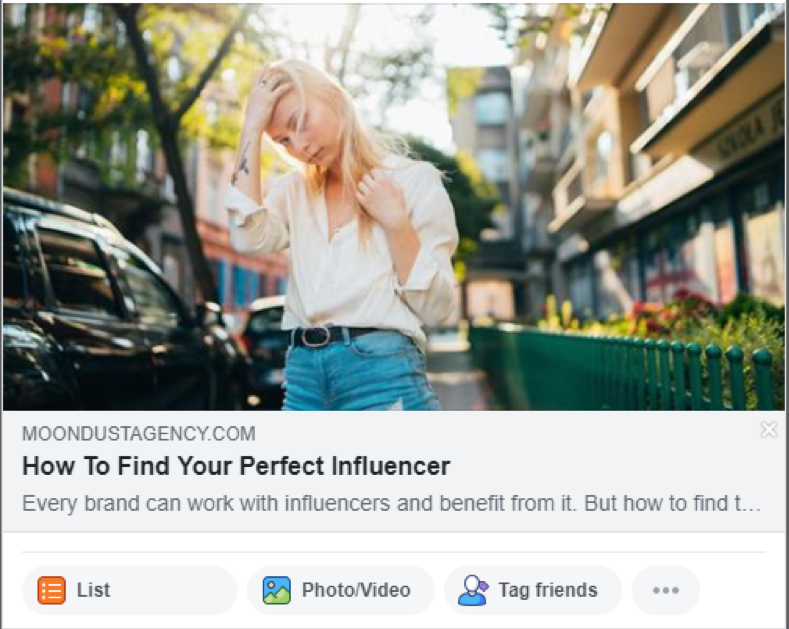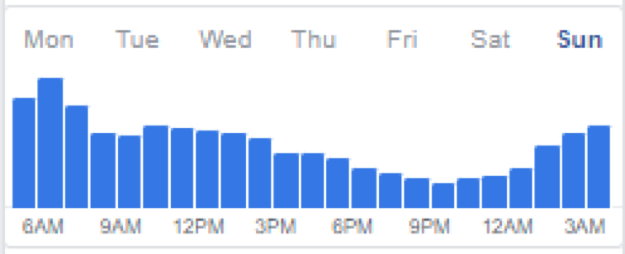8 Website Content Writing Mistakes You’re Probably Making
It’s highly likely that your brand already has a website. But even if it does, it’s just one of 1.89 billion websites in the world. Competition is fierce so it’s essential to get your content marketing right in order to attract, engage and convert your web visitors. Our team has compiled the top 8 website content writing mistakes you’re probably making so you can achieve the best possible results for your brand.
Credit : Unsplash.com
The Basics
Before we look at your website content writing mistakes, here are some basic website problems that can prevent you from getting business.
· Slow Loading Pages- 47% of visitors expect a website to load in less than 2 seconds, and 40% will leave the website if the loading process takes more than 3 seconds.
· Mobile Optimisation-60% of all web searches are now conducted using a mobile device. If your site is not optimised for mobile and contains fiddly menus and non-adjusted text you will be missing out.
· Easy Navigation –Your site needs to be easy to navigate with a simple menu that visitors can understand. Flashy design is fine providing it is user friendly and accessible.
· Poor Spelling-Nothing turns off web visitors like poor spelling or grammar. It’s essential that you use an experienced content writer or content marketing agency to present your brand in a professional light.
#1 Not Enough Content
This is website content writing 101. If your website does not have enough content it will not perform well. To be correctly indexed by the search engines each page should have at least 500 words of optimised content. This is especially important for key pages such as “Home” or “About Us”. Another basic content marketing error is failing to have a blog that is regularly updated. Websites with a blog have tend to have 434% more indexed pages and that’s great news for attracting new visitors. Remember 47% of buyers say they will view 3-5 pieces of content before engaging with a sales rep. That means that your content needs to engage them and nudge them along before they will contact your brand directly. A B2B blog has tremendous SEO benefits and organic search attracts high-quality leads but it only works if you’re blogging regularly. Businesses publishing 16+ posts per month get almost 4 times more traffic than businesses publishing zero to four articles.
#2 Your Article Format is Wrong
We’ve established that you need content on each page and you should have a regularly updated blog. But what if you have a blog and it’s not performing for you. There are several seemingly minor mistakes you could be making which will contribute to an overall content marketing failure.
Length-As 43% of people admit to skimming blog posts you certainly can’t afford to get this one wrong. The average word count of top-ranking content (in Google) is between 1,140-1,285 words. Too short and you may have failed to explain your concept, too long and you’ve sent your readers to sleep.
Headlines- H1, H2, H3 tags are essential for separating text and improving your search engine rankings. A headline should summarise what’s coming up next and ideally be list based. In fact, research shows that readers prefer list-based headlines as they can easily navigate to the point that most interests them.
Layout-Analyse your website content from both desktop and mobile. Studies show that white space increases comprehension by 20%+. That means space between paragraphs and interspersed images. Blog articles with images get 94% more views which is a stat that’s way too huge to ignore. Similarly, awkward font types or type face that’s smaller than a 10 point will send your visitors running for the hills.
Sentence Structure-Search engines favour short sentences because readers do. The optimum number of words per sentence should be around 12. That means skipping unnecessary words and avoiding too much jargon. Similarly, paragraphs should be kept to four sentences maximum to fully engage readers.
Tone – It’s essential that you know who you’re speaking to. Are you B2B addressing shareholders or are you B2C communicating with end users who might shop on your site?Stats show that avoiding passive text and addressing web visitors directly is more effective. For example:“We want to thank you for your support” will be more effective than “Bluedot investments thanks its clients for their support.”
#3 You’re Not Utilising Keywords Effectively
One of the major reasons you’re not seeing results from your website content is a lack of attention to keywords.At the heart of blogging is the goal of engaging web visitors. However, that is intrinsically linked to getting found by search engines. High-quality blog articles that are keyword and key phrase focused will help your brand attract visitors who are qualified and ready to close. So, when you use a search engine, what do you type?
Example: Seamless- A tailor located in London.
Good Keywords: Tailored clothes London, make me a suit in London, plus size clothing London, clothes alterations in London, altering a suit in London.
Article Examples:
· Why choose Seamless for tailored clothes in London
· Why plus size Clothing in London is on the rise
· 10 things to know about altering a suit
The point is that your content writing needs to reflect the needs of people searching online. 70-80% of internet users ignore paid ads and only focus on organic results. That means that you don’t need to spend big bucks on Adwords if your articles include relevant keywords. Ideally your website content will contain 1%-3% keywords. Any more and you could be seen as keyword stuffing, something that users and search engines do not favour.
#4 You’re Not Diversifying Your Content
Your website content needs to be effective and regularly updated. But that’s just one place online and it relies on users finding you via direct search or keyword matched search. It’s essential that you diversify your content marketing strategy so that you appear in additional places and reach more potential customers.
Add Share Buttons-Your blog should have social media share buttons to help circulate your amazing content. Don’t make it difficult for readers to share your message. Feature a floating share option or easily accessible buttons at the foot of the article.
Blog on other channels-Only 8%of marketers plan to add Medium publishing to their content strategy. This could be a mistake. Channels like Medium are on the rise and can be an extremely effective strategy for driving traffic and building awareness.
Repurpose your content- Could your latest blog post be turned into an animated video for your YouTube channel? How about repurposed as an infographic for Facebook? And what about your hashtags for Twitter? Hitting “publish” on your blog post is only the beginning. You need to maximise the impact of your content by sharing and repurposing content.
Email marketing-If you have an opted in database (remember your GDPR rules) then you could be utilising email marketing. Create a weekly or monthly blog roundup to send out to your database. This will draw them back to your blog and keep them updated on your latest news, events and tips.
#5 You’re Including Multiple Ideas per Paragraph
In a study of how consumers read content on the web, Jakob Nielson found that the first words in your paragraphs are crucial. If your readers aren’t immediately drawn in, they will probably click out. This can contribute to a high bounce rate and low conversion. As individuals we don’t like to feel confused. Feelings of confusion lead to uncertainty, distrust and boredom. This applies to both spoken and written text. Take this spoken dialogue as an example:
Jane:What is your profession?
Bob:Well, do you know anything about computer configuration? That’s what I used to do but since I moved to NYC I don’t anymore. Do you know NYC well? I work there but left my original field of study to pursue a new venture. Did you try the new sushi bar in downtown Manhattan?
What is Bob’s profession? We’ll never know. Similarly, rambling paragraphs of text leave your readers confused and switched off. Use headings and subheadings to clearly separate ideas and stick to one topic per paragraph addressing or answering it clearly in the first sentence..
#6 Failing To Include A Call To Action
The best website content writing in the world is meaningless if there’s no call to action. A call to action (CTA) is a driver that helps your readers to take the next action. An action could be “Chat now”, “Shop now” or “Download our whitepaper”. Winning content writing has three duties. To attract, engage and convert. If you have attracted and engaged without converting, you’ve missed the key point of your blog. Here are some suggestions for your next CTA:
Tweet This- CTA’s don’t have to be salesy. By including a “Tweet this” button around a key statistic you’re encouraging readers to share your message on Twitter.
Subscribe Now- This is a great CTA to use. That’s because you are legitimately capturing your reader for future messages. Be sure to double opt in to avoid an GDPR violations.
Comment Below-Inviting your users to comment is a great CTA. Why not end with a question to help spark debate. For example- “Do you agree? Comment below and tell us your thoughts.”
Shop Now- A more direct CTA like “Shop Now” can be highly effective. If your blog was about the latest winter fashions, you may want to include several CTAs throughout. For example:“Shop Winter Coats”, “Shop Scarves” or “Shop Christmas Gifts”.
Contact Us- The most popular CTA is to invite the reader to contact you. It’s great to offer direct contact methods such as a live chat, email or contact form.
You can try both written and image-based CTAs in your content. Begin with a written CTA above the fold and in the middle of the content piece. At the end of the article include an image-based CTA to prompt the next action.
#7 You Failed To Use Quality Graphics
If you’re using terrible stock photos or worse still, low quality website images, stop right now. Studies show that first impressions of a blog or web page impact directly on the user’s sentiment towards your brand.
Low quality images = cheap, unprofessional, scam, copied, amateur
And there’s no excuse these days. With sites such as Pixabayand Pexelsproviding royalty free, high quality images, you just need to stop cutting corners.
Search engines don’t like copied content or copied images and you can land your brand in hot water if you don’t have the correct licensing. Here are some more tips for including graphics in your website content writing:
Choose Relevant Images- It may sound obvious but choosing images that don’t match your content can cause a high bounce rate. That’s because readers are attracted by a header image then lost when the content doesn’t match.
Avoid Cliches-Stay away from boring cliché images of business people showing their cards, shaking hands or doing the “thumbs up”. Images like this have been circulating for years and are far from original.
Enable Social Sharing- When you create a blog post, be sure to enable an image for social sharing along with a title and description. This will then auto populate when the article is shared making it more appealing. Like this:
Resize Images-Use a free tool like TinyPNGto resize your images before uploading them. This will prevent your site from running slowly and losing valuable visitors.
#8 You’re Not Sticking To A Schedule
One surefire way of turning off readers or newsletter subscribers is by being inconsistent with your content marketing. Post too often and you can overwhelm them. Post too little and they will forget about you. Post erratically and you will seem disorganised. This is where you need a clear content marketing schedule.
Posting one to two times per week is ideal and shows that you are consistent and focusing on quality content. It will also allow you plenty of time to circulate, repurpose and socialise your content to maximise the benefits.
You should also think about time zones. Are your readers in the same time zone as you? If not, then your content may be hitting their feeds and inboxes in the middle of the night. Similarly, know your audience and when they are most likely to react to a piece of content. Let’s look at leading video content provider Buzzfeed Tastywhich has an incredible 95 million Facebook followers.
The channel is known for posting mouth-watering recipe videos:
And it knows its target audience and when they will likely respond.
If you are a food vendor or restaurant chain, you want to be posting content around 11am or 5pm in your target region when viewers are getting hungry and thinking about lunch or dinner. This is a simplified example; however, it does highlight the importance of timing. It’s easy to use post and social media scheduling to reach your audience even if you’re in bed asleep!







